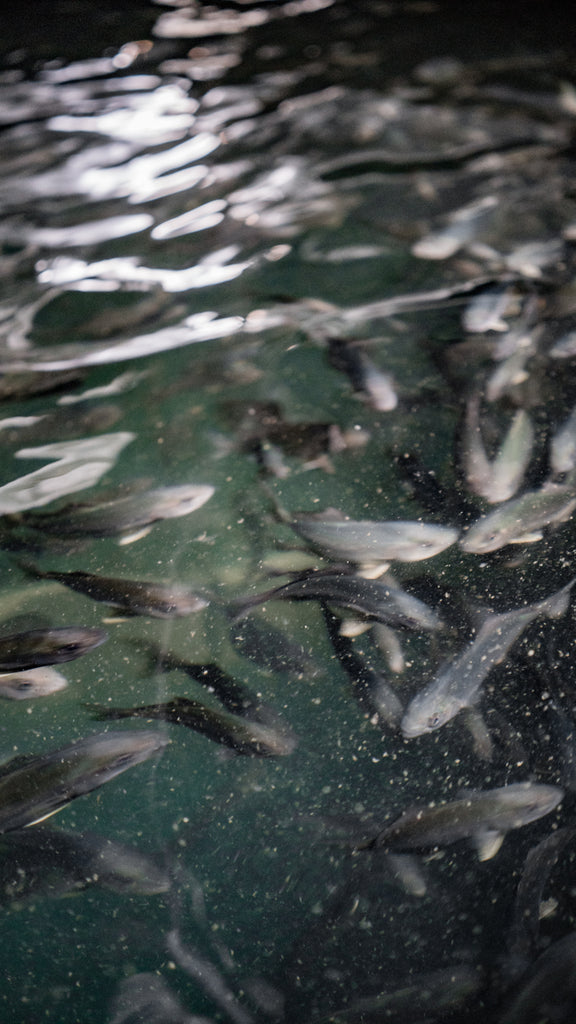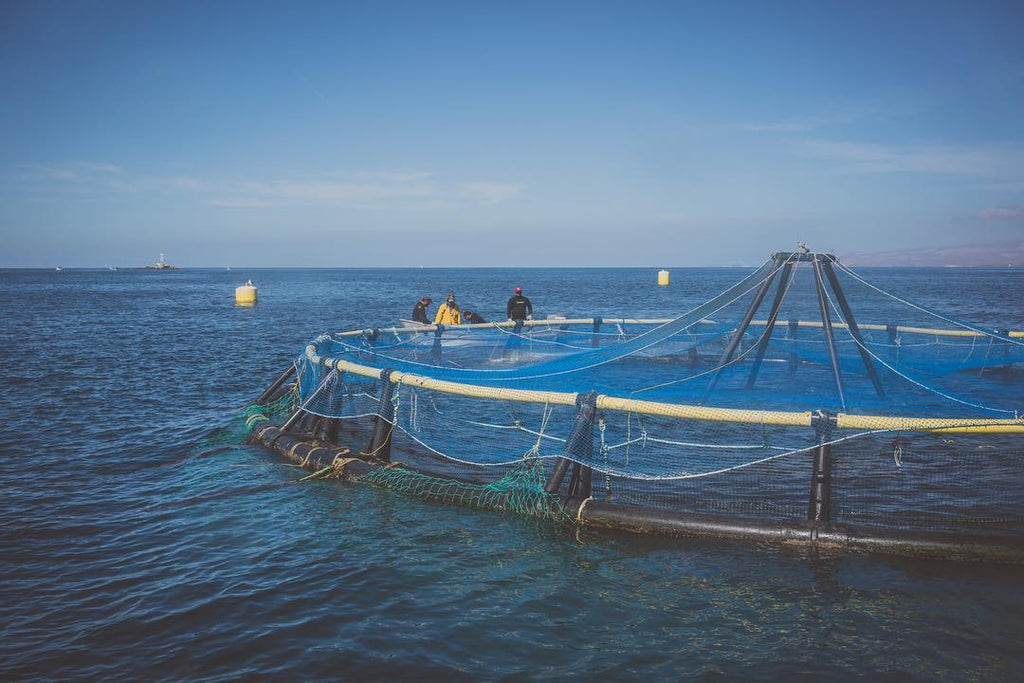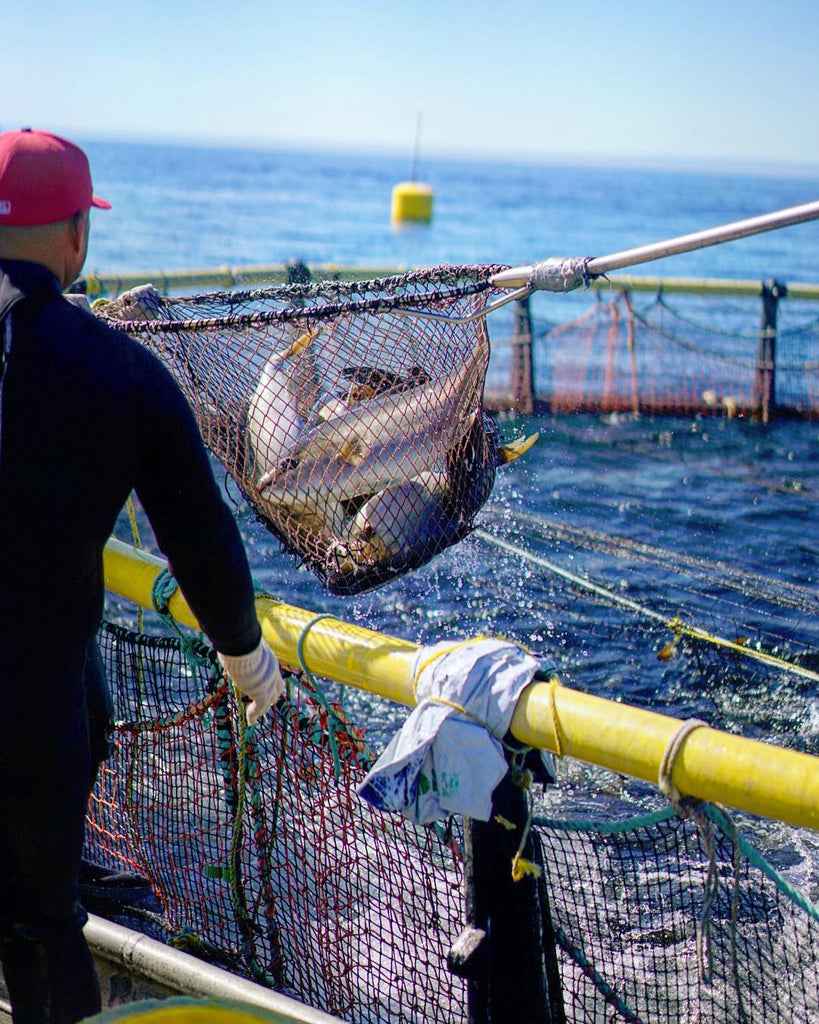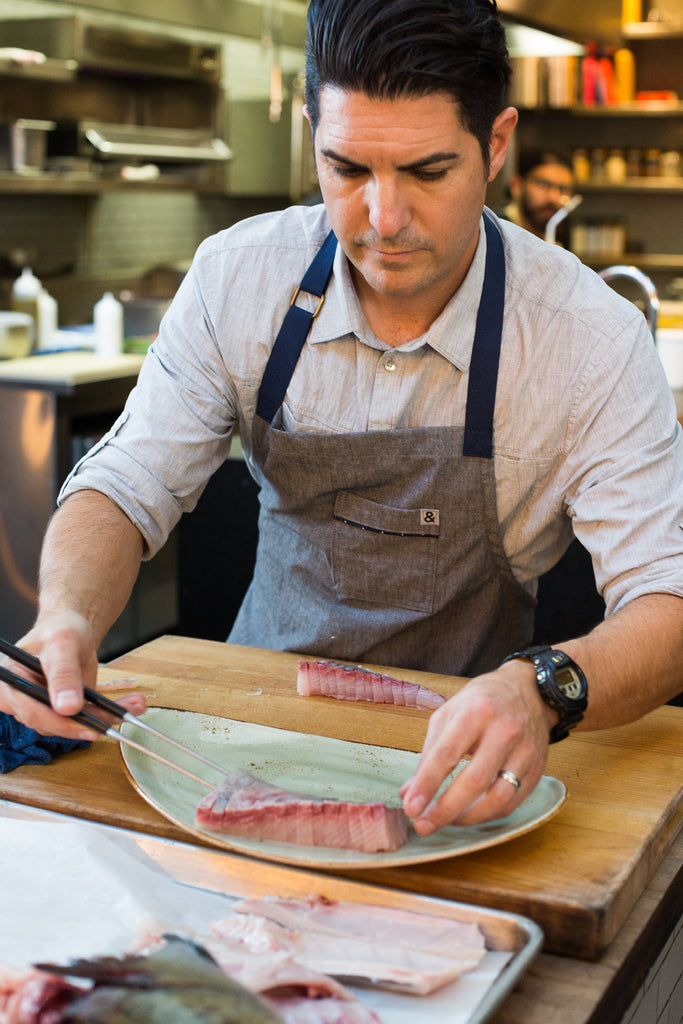What is Kanpachi? And Why Not All Farmed Fish Suck!
Words & Photos By James Arthur Smith of Omega Blue

Kanpachi is a English translation for the Japanese Kanji pronunciation of a species of fish scientifically identified as Seriola Rivoliana. Widely regarded as the best tasting of the nine unique species of fish in the Seriola or Jack family, generically labeled Yellowtail. However confusing Kanpachi with Hamachi or Hiramasa would be akin to confusing cabbage with a turnip, brussels sprout, rapini or rutabaga, all members of the genus called Brassica. If you’re observing these plants as they grow, it’s easy to see they are all of the same family. However, each have very unique characteristics. Not only do various members of the Seriola family each have unique taste, texture and aging characteristics, their environment, cultivation, farming, diet and harvest methods vary significantly and greatly affect the end product.
While some highly regarded Chefs regularly tout "wild-caught" as the holy grail for all fish, some sushi Chefs, health aficionados and notably, the researchers at the University of California Davis might disagree.

In most aspects of our modern diet, humans have learned to cultivate plants and animals in semi-controlled environments called “farms” which endeavored to replicate specific characteristics deemed beneficial. Wild-caught duck for example can be a fantastic product, but only if the duck lived in a clean environment, ate lots of clean foods that impart pleasing flavor, and the animal was killed in a manner that minimizes the release of stress hormones and lactic acid. Conversely a wild duck that lived its life next to a trash dump, downstream from pesticide runoff or a chemical plant might not be as fantastic.
Plastic Sushi
Along the beautiful coastline of California there are many are many beautiful fishing zones. However being close to some of the largest cities in the world has a material effect on our oceans, the microorganisms, and the larger species that eat the unseen downstream pollutants of our cities. According to the University of California Davis Study on Plastic Pollution in wild-caught seafood purchased throughout California, an average 1 in 4 fish or 25% of fish sold contain levels of microplastics. Furthermore heavy metals such as Methylmercury are bioaccumulating in seafood often originating near major cities. Not something to be taken lightly, Methylmercury effects on humans include neurotoxicity in adults and developmental problems in fetuses and children.
In short, the environment and diet of fish is just as important as the terroir of wine grapes.
Dynamite!
We all grew up with the romantic notion of fishing with a single pole, a small spool of fishing line and a single hook waiting the perfect fish to come along... That’s how I learned to fish in San Diego. We used to catch mackerel and sea bass with frozen sardines off piers in the marina or on day boat sport fishing operations on special occasions. But the industrialization of commercial fishing is much more efficient with the aid of technology like super seiners, spotter plans, multiple mile long lines, drift nets, bottom trolls etc. Without strictly enforced regulation, humans have proven an ability and appetite for over-fishing time and time again. The examples from Monterey Bay’s once thriving cannery row, to New England’s once seemingly endless supply of Atlantic Cod, overfishing of species seems to simply bounce from one in fashion fish region and species to the next. In the short term game of humans catching fish, humans usually win. We find better, faster, cheaper and deeper methods of catching as much as we can. In some parts of the world the use of dynamite to stun, shook or kill all living creatures in the blast zone is considered an effective means of commercial fishing. In other areas, cyanide is used to saturate an area where fish might be hiding, thus in a similar manner to dynamite, all of the dead or stunned fish float up where the can be easily collected. Just because it is “wild-caught” does not qualify something as ethical, sustainable, or premium. Even romantically wild-caught hook-and-line fish from pristine areas can make us sick if the fish are not properly harvested, bled, iced, etc.
The Case for Farmed Fish:

In ancient Hawaii where fish farms are first recorded, there were hundreds of coastal and intercoastal fish farms. The whole area which is now referred to as Pearl Harbor was once one of the most productive fish farming regions in the island chain. In line with the cultural practice of pono, the artisan production of fish farming was sustainably managed for generations, providing a mainstay of the communities protein.

Modern fish farming similar to modern wild commercial fisheries initially followed the industrial agricultural model which often prioritized quantity over quality. When VC money demands maximum returns as quickly as possible with as little risk as possible, fish pen density is usually increased to fit as many living creatures in a small area as possible, inexpensive feeds are used to lower operational costs, growth promoting hormones are experimented with and antibiotics are administered to mitigate the short term risks of outbreak. The model has proven profitable for generations in terrestrial agriculture from cattle to tomates, salmon to talapia. Unfortunately there are side effects to this sort of quantity over quality mass production farming to the environment, the product and the people.
The Farm-To-Table Movement

On a parallel track to the growing farm-to-table movement, select farms both terrestrial and water-based are reviving the artisanal qualities of boutique, biodynamic, multitrophic farming as a means of prioritizing quality over quantity and rediscovering sustainable farming practices. Coupled with modern hatchery systems to breed fish in controlled environments where their eggs can be cultivated has enabled fish farms to significantly reduce pressure on wild stock populations. Deep-water mooring systems allow large low density grow-out sites to move offshore, to rotate or follow areas and ensure sufficient currents can flush the environment and bentic floor. Multitrophic operations are cultivating symbiotic species like clams and oysters that filter feed the offcastings of fish farms and cleaner fish that actively clean larger fish. Sustainable, low-mercury, feed sources for farms are also now available with ISO 1000 standards made from Marine Stewardship Council certified sustainable by-products like the tailings from MSC sardine canneries.
The Future of Fish Farming

We know a growing population can not rely on subsistence fisheries and industrial scale fisheries are decimating wild stock populations. The foundational metrics of clean water, clean feed and clean fish are in place at a growing number of fish farms. You can now choose to support deep-water, low-density, mercury-free, plastic-free farming practices. However as these processes cost more than mass produced operations, they can only succeed financially if consumers voice their opinion and choose to selectively support specific fish farms for their farming practices in the same way consumers have learned to ask for pasture-raised cattle from Snake River Farms or Niman Ranch, or Jidori or Mary’s Chicken, or Weiser Family Farms potatoes. Transparency enabled by a google search, QR Codes and Instagram make information accessible to most consumers instantaneously. Information is out there. You just have to ask!
Vote with your dollars and be skeptical of anyone that makes unsubstantiated generalizations.
To learn more about @OmegaBlue.us Baja Kanpachi please check out our instagram, our website, our come visit us in the Sea of Cortez and you can swim with our fish! We host regular culinary of our operation and the local environment.


